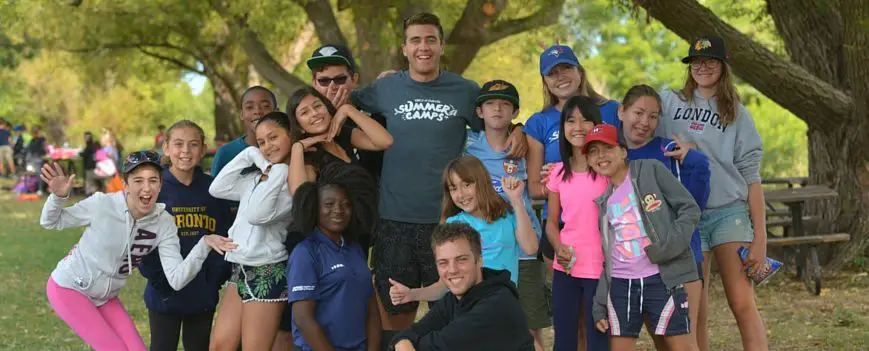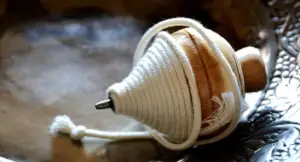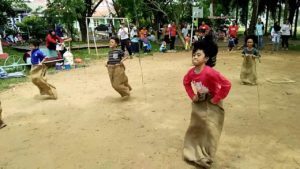Traditional games have been handed down from generation to generation and become a fundamental tool for children to demonstrate their skills and abilities as well as to restore friendships between friends and neighbors. By practicing frequently those games where several people are involved, personal well-being can be achieved since values are rescued which leads to a harmonious social environment.

It is necessary to consider everything related to the traditional games of Costa Rica, since these traditions manifest an important part of the culture of this country, through practices and activities that are learned from generation to generation.
It is necessary to take into account that all these traditions start from other ancient cultures, and most of these practices are related to the activities performed by these cultures on a daily basis. Since originally the purpose of these traditional games was to demonstrate the craft skills that each participant had in the game is how most of the traditional games in different cultures around the world were confirmed.
In general, what is known today regarding traditional games is that they are mainly children’s practices that do not need more toys, usually the resources are easily available from nature. In this way, based on these customs, some individual or collective purposes can be identified, in which children do not need greater resources or a specific space.
Escondido (hide and go seek).

In this case as part of the traditional games of Costa Rica is the game that is known as hidden, it usually takes place in an open space, as the rules of this game is that all players except one hides, this participant goes to look for the other one’s hiding place and try to find them, then in some cases they have races until they reach a certain goal.
Bolinchas (marbles)
There are several ways to play this game with small handheld spheres:
1- Throw the bolinchas and try to introduce them in a hole.
2- Hitting the opponent’s bolincha.
3- Making several holes in the ground and trying to get the bolinchas into them.
4 – Making a circle and trying to get the bolinchas to land in it.
Chromos.
Regarding card games, in this one the cards are placed face down, preferably on completely smooth surfaces, usually, the custom is to play on the floor and each participant carries their own collection of cards. Usually, the first participant must quickly hit the chrome with the hand in a hollow position, this in order to recreate a vacuum so that the chrome on its side turns, the purpose of the game is to achieve this because if the chrome is Flip the participant wins.
This activity is also known traditionally as the game of hunting cards since the participant who achieves the highest number of cards is considered the winner of the entire round.
Trompo.

Among the traditional games of Costa Rica, one of the most representatives of this is the Trompo (Spin), it is important to keep in mind that this is a game well recognized in many cultures. It can usually be described as a kind of spinning top that has the ability to rotate on its axis since it has a tip that acts as its gravitational center. From this fact, the different games are carried out with the purpose of showing the best techniques on the part of the participants of the game. It is for this reason that the spin can be played individually or collectively, and when considering playing in groups certain skills are established to identify who is the participant with the best skills at the time of handling the spin, measuring, for example, each one’s speed and the time it keeps spinning.
Guerra de Semillas (Seed War).
In vacant lots or in open fields, it was common to find castor beans, a plant that grows up to 15 meters high and whose seeds are similar to small balls. These seeds are relatively soft, however, some may have spines. It was a common game among males, who made teams to make a war of castles; more than one sometimes came out with a small bruise.
Alborotar el Panal (Stirring the Honeycomb).
This game strengthens people’s physical strength and aerobic capacity since they must run a lot. Generally, more than five people play. All people, except one, place one hand on top of the next person’s hand until everyone is intertwined. According to this game, the interlaced hands represent the honeycomb. The person who has not placed his hands, approaches, and claps simulating the disturbance of the honeycomb or nest and immediately must flee, because all will try to reach him and to clap his head as if it were a wasp attack. At the end of the game, the person who disturbed the comb is left with a strong headache from the pecks or blows received. This was a very common game in school recesses.
Brincar Mecate.(jumping rope)
Rope jumping is one of the favorite games for boys and girls and one of the oldest. For its execution, a preferably thick rope is required. Through this game, motor coordination and physical endurance and cardiovascular health are strengthened. While jumping, it is common to sing songs or do another juggling, taking care not to get tangled in the rope. In case the jumper is entangled with the rope he loses the turn. You can jump with a single rope or even more complex with two ropes simultaneously. There are variations of the game, such as jumping the clock numbers, the days of the week or trying to do some stunts while jumping. Chilillo is when people who turn the rope try to maintain a fast speed, while the person who jumps tries to keep the pace.
La Flecha.
The arrow (slingshot) is a common toy since ancient times. In this case, it consists of hardwood and good thickness, which is sanded to a smooth surface, at the edges the link is held, which usually has a piece of leather in the center to hold small stones or sticks. The arrow is used to throw stones at previously defined objects. The bullseye is in some cases consist of fruits put at a prudent distance, and the game consisted of throwing the stones, trying to hit the target. The winner is the one who has the best aim and precision. This game strengthens people’s motor skills and accuracy. Unfortunately, this type of toy was previously used to hunt small animals, including birds. It was a favorite toy for boys, who liked to collect arrows of different sizes and colors for competition.
Carreras de Saco (Sack races).

Good coordination, balance and physical condition are essential requirements for those who want to run in sacks. This was a traditional game, in which the boys and girls took advantage of the jute or gangocha sacks that their parents stored in the troja or corridor of the house, and made them an indispensable item for their daily games. The game consists of running with your legs stuck in a bag. For this, it is necessary to locate on flat terrain to facilitate the movement. For this game, more than two people are required, since it includes competition and speed. Each participant must have a sack, in which he will put his legs. Before starting the race, the starting line is drawn where the competitors are placed. When the signal is given at the start of the race, competitors must move quickly jumping until they reach the previously defined goal. During the race, it is common for people to have difficulty maintaining balance and many falls, but they quickly have to stand up and continue on the course until they reach the finish line, having lots of fun!
